The Right Wire Nuts Are the Unsung Heroes of Long-Lasting Installation
In this installation of our Epic Fails series, we take a closer look at landscape lighting wire– specifically, when wire nuts go wacky. These are real-life customer situations where LUX Landscape Lighting has been able to repair and replace damaged outdoor lighting systems.
Landscape Lighting Wire: How It Started
Unskilled landscape lighting installation can look okay at first and work for awhile. This landscape lighting wire example below is messy and unattractive, but it might look a bit “official” to the uninitiated.

Truly, though, these wire nuts won’t stand the test of time. Splicing wire together is a necessary part of landscape lighting installation, so it’s important to do it right. When using standard wire nuts, the installer needs to fill the interior with silicone to waterproof, weatherproof and dirt-proof the connection. (Not to mention that people, pets or wildlife are certainly going to trip over and disconnect these unsecured wires).
Here’s another messy example that may be hidden from below. But it’s not hidden from the harsh rays of the sun.
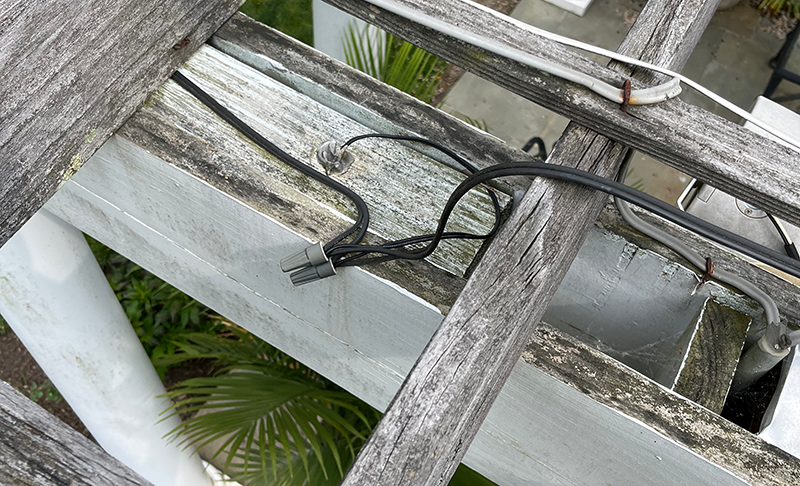
This installer ran new wire in a haphazard way across this pergola, without even removing the landscape lighting wire from an old, pre-LED system. At least the old wires were secured neatly to the beams. Addressing the wire nuts, you can see how they are perfectly positioned to catch and retain rainfall.
Landscape Lighting Wire: How It’s Going
After a month or so buried in the ground, it becomes apparent why LUX uses special landscape lighting wire nuts for our installations. The below photo shows an epic fail we dug up after the system stopped working. Mud and moisture worked its way into the connection and corroded the wires.
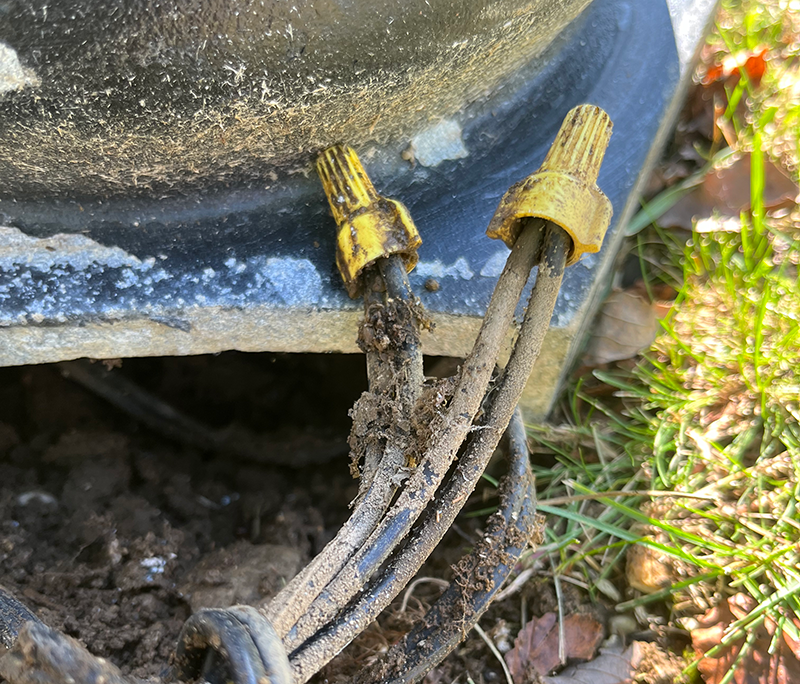
Here’s another, even more dramatic example of landscape lighting wire gone wrong. This wire was never buried in the first place, so it was further open to the elements. That thing is packed full of dirt!
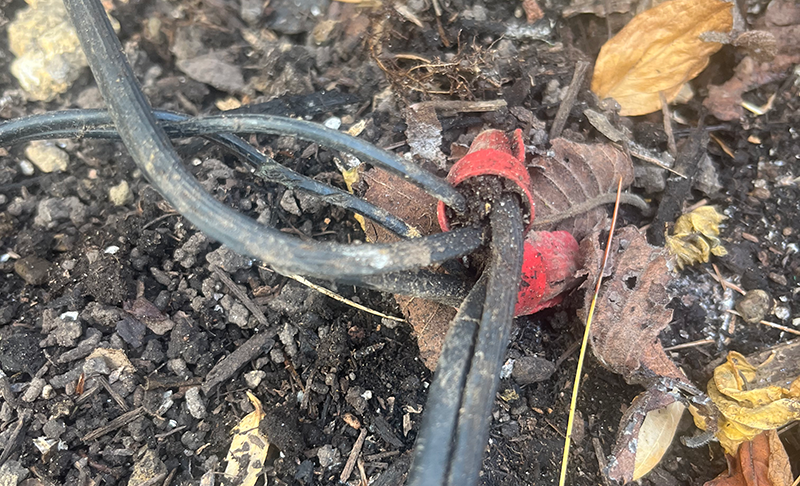
It’s important to bury landscape lighting wire, to keep it safe from both sunlight and breakage. Also, it’s highly unattractive to have visible wire running across your landscape beds.
Landscape Lighting Wire: It Gets Worse
Most lighting installers know a bare wire nut won’t work long outdoors. So, do hasty installers research what to use instead? Ha, no. We’ve seen more than our share of this electrical tape setup:
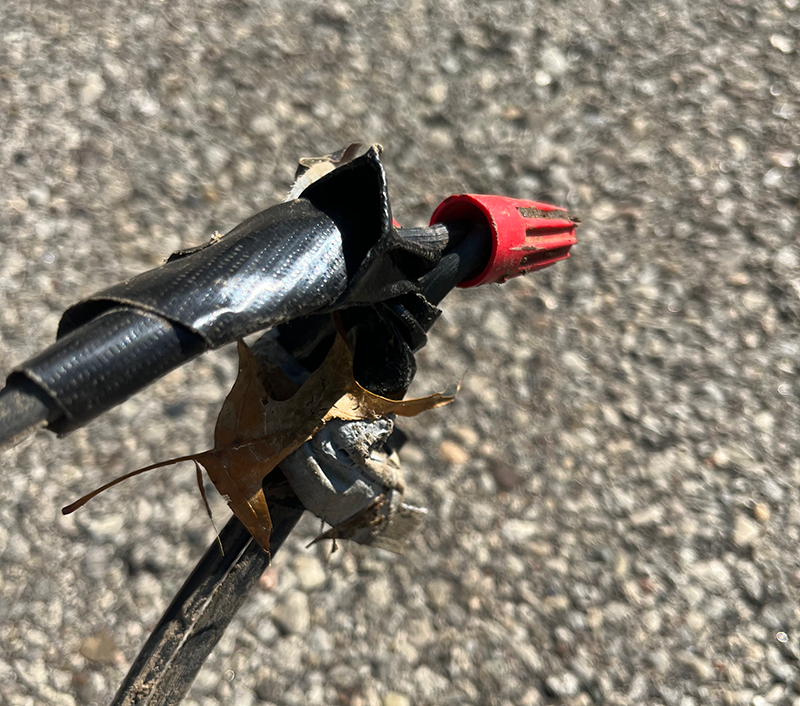
It’s common sense to know that electrical tape will lose its “sticky” if it gets wet or dirty. And yet, here we are. These two landscape lighting systems were doomed to failure from the start. In the bottom example, you can see that the installer didn’t even try to use wire nuts (did he run out?).
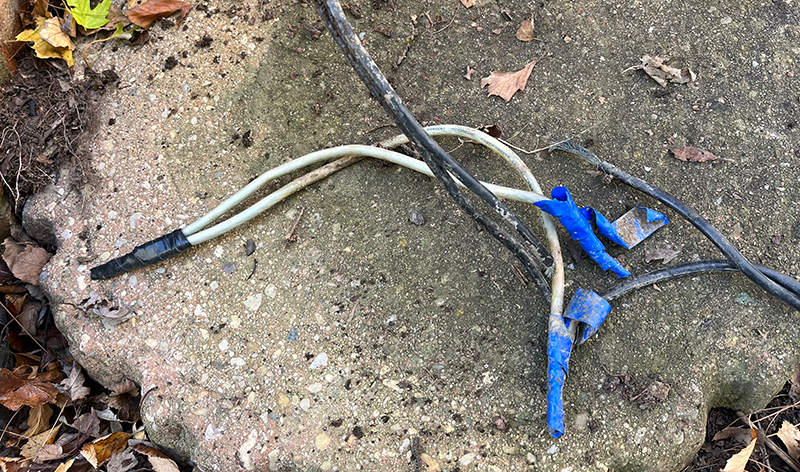
We’re often shocked to discover landscape lighting systems installed with such ignorance and carelessness. Not literally shocked, thankfully– low voltage LED landscape lighting is quite safe. But it doesn’t have to be this way.
Landscape Lighting Wire: LUX Landscape Lighting Shows the Right Way
LUX Landscape Lighting has been on an educational mission to help homeowners find high-quality installers for their outdoor lighting investments. Landscape lighting wire is an important element. Here are three videos we’ve released in the last year:
- Landscape Lighting Wire: How to Avoid a Fire
- Bed Edging & Landscape Lighting Wire
- Landscape Lighting Wire Nuts Explained
Choosing the right landscape lighting company to design and install your system is the first step to decades of outdoor lighting enjoyment. Our professionals are highly-trained, creative experts who are dedicated to landscape lighting. See the LUX Landscape Lighting Difference and contact us for a quote on new installation, repairs or maintenance. We service all brands of landscape lighting.

Leave A Comment